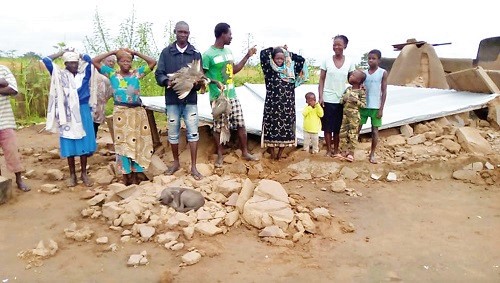
Reducing disaster damage on infrastructure
Nobody bargains for disasters, yet they happen.
Parents see their children off to school with the hope of meeting at home by the close of the day only to hear that the school building has collapsed, killing and injuring some of the pupils.
Advertisement
The recent report of two pupils who were killed and six others who were injured when a school building at Dzorwulu, a suburb of Accra, collapsed, was chilling for parents and sympathisers.
We often hear of storms hitting communities and ripping off roofs of homes and schools and rendering hundreds homeless.
Some disasters are avoidable, particularly those caused by human actions such as the disposal of refuse into drains, building on watercourses and the indiscriminate felling of trees.
On the other hand, there are natural disasters that no one has control over.
These are hurricanes, torrential rains, lightening, earthquakes, Tsunamis and volcanos.
No one is exempted from disaster for which reason we must be concerned and do whatever we can to mitigate the effects on humans and the environment.
One can recall the 2011 Tsunami on the coast of Tohoku, Japan that engulfed tourists and holidaymakers.
The earthquake and the Tsunami off the Pacific coast claimed 15,897 lives, with 6,157 injuries and 2,532 people missing.
The total damage cost $360 billion according to a United Nations (UN) report.
The June 3, 2015 fire and flood disaster in Ghana that sent the nation into a state of shock also claimed about 200 lives, with 40 serious injuries and 28 minor ones.
The UN General Assembly has designated October 13, as the International Day for Disaster.
The Day is set aside to promote a global culture of disaster reduction, including disaster prevention, mitigation and preparedness.
Day
In Ghana, the National Disaster Management Organisation (NADMO) under the Ministry of the Interior is the government agency responsible for the management of disasters, as well as other emergencies.
Established in 1996, NADMO also coordinates the resources of government institutions to develop the capacity of voluntary communities-based organisation to respond effectively to disasters or similar emergencies.
It is, therefore, not out of place that the Director-General of NADMO, Mr Eric Nana Agyeman-Prempeh, called for consolidated efforts and the pooling of resources by national emergency response institutions to effectively manage disaster situations, on October 13, 2019, when the day was commemorated.
The theme for 2019 International Day for Disaster Risk Reduction is:
Reducing disaster damage to critical infrastructure and disruption of basic services.
The theme is centred on the Sendai Framework, targeted on the Sendai seven campaign launched in 2016.
Disasters, infrastructure
Given the high death toll, notably in earthquakes, Tsunamis and hurricanes, it is important that great care is taken to ensure that schools and hospitals are built to last and to contain the situation during disaster.
Other infrastructure such as energy, water supply facilities, telecommunication and bridges are also to be taken care of.
The World Bank estimates that disasters cost the global economy $520 billion and pushes 26 million people into poverty every year.
Disaster risk reduction is everybody’s business, from policy makers to schoolchildren.
In that sense, we are all prone to it.
Responsibilities
Focusing on reducing risks of disasters on infrastructure, the theme puts a huge responsibility on the built industry actors, such as surveyors, planners, building and electrical engineers, hydraulic engineers, architects and artisans.
Their work starts with the testing of soil, planning and the siting of buildings and the quality of building materials.
In addition, qualified human resource is paramount for enforcement and proper supervision.
It is incumbent on building contractors to engage the right calibre of artisans and qualified engineers.
When personnel in the built industry adhere to best practices, there will be fewer destructions during disasters.
The general public also have a role to play. Strict adherence to building regulations and sanitation by laws will help reduce these disasters.
It is worthy to note that building on watercourses and flood-prone areas is like digging one’s own grave or throwing a ball at a wall.
It will bounce back and at a great cost.
Lowlying settlements should be well planned and have proper drainage systems in order to reduce flooding during heavy rainfall.
Trees serve as wind breaks. therefore, tree planting should be a regular exercise by residents of communities, schools, churches, mosques and other interest groups.
It is rather unfortunate that in building houses, people seal off entire compounds with concrete, leaving no space for gardening and rain water to seep into the soil.
A call by Mr Agyeman- Prempeh for the establishment of a well-resourced sub-regional emergency response team capable of mitigating the impact of disasters in member countries is timely and action must be taken now.
Disasters are no respecter of persons, so let us do our part to reduce the risks associated with it.
The writer is a member of staff of the Information Service Department (ISD)




